ZongYuan Ge
Generative OpenMax for Multi-Class Open Set Classification
Jul 24, 2017
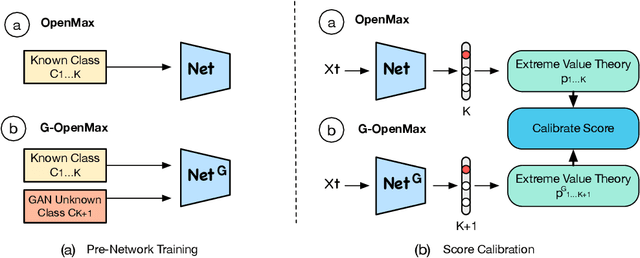


Abstract:We present a conceptually new and flexible method for multi-class open set classification. Unlike previous methods where unknown classes are inferred with respect to the feature or decision distance to the known classes, our approach is able to provide explicit modelling and decision score for unknown classes. The proposed method, called Gener- ative OpenMax (G-OpenMax), extends OpenMax by employing generative adversarial networks (GANs) for novel category image synthesis. We validate the proposed method on two datasets of handwritten digits and characters, resulting in superior results over previous deep learning based method OpenMax Moreover, G-OpenMax provides a way to visualize samples representing the unknown classes from open space. Our simple and effective approach could serve as a new direction to tackle the challenging multi-class open set classification problem.
Exploiting Temporal Information for DCNN-based Fine-Grained Object Classification
Oct 24, 2016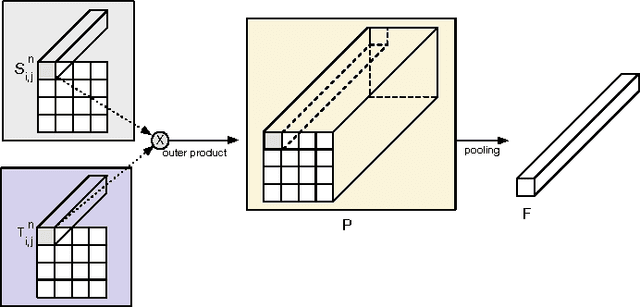
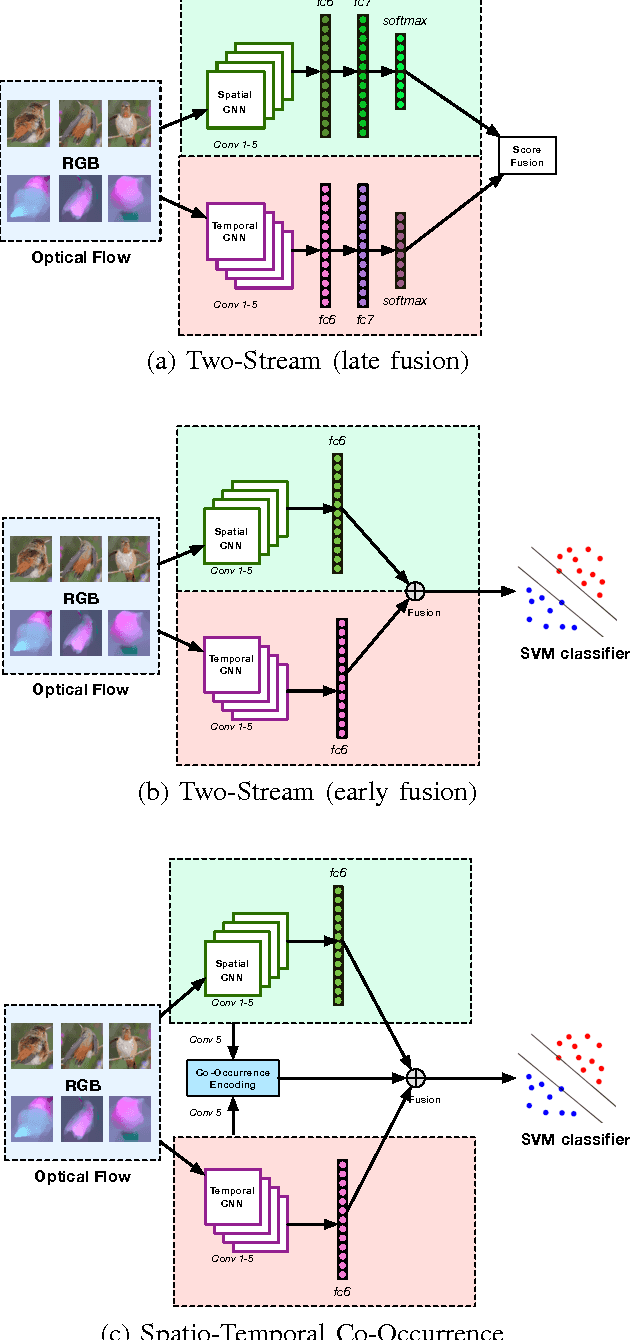
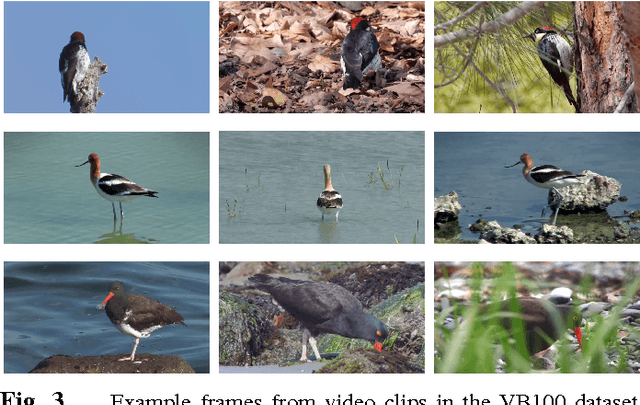

Abstract:Fine-grained classification is a relatively new field that has concentrated on using information from a single image, while ignoring the enormous potential of using video data to improve classification. In this work we present the novel task of video-based fine-grained object classification, propose a corresponding new video dataset, and perform a systematic study of several recent deep convolutional neural network (DCNN) based approaches, which we specifically adapt to the task. We evaluate three-dimensional DCNNs, two-stream DCNNs, and bilinear DCNNs. Two forms of the two-stream approach are used, where spatial and temporal data from two independent DCNNs are fused either via early fusion (combination of the fully-connected layers) and late fusion (concatenation of the softmax outputs of the DCNNs). For bilinear DCNNs, information from the convolutional layers of the spatial and temporal DCNNs is combined via local co-occurrences. We then fuse the bilinear DCNN and early fusion of the two-stream approach to combine the spatial and temporal information at the local and global level (Spatio-Temporal Co-occurrence). Using the new and challenging video dataset of birds, classification performance is improved from 23.1% (using single images) to 41.1% when using the Spatio-Temporal Co-occurrence system. Incorporating automatically detected bounding box location further improves the classification accuracy to 53.6%.
Fine-Grained Classification via Mixture of Deep Convolutional Neural Networks
Nov 30, 2015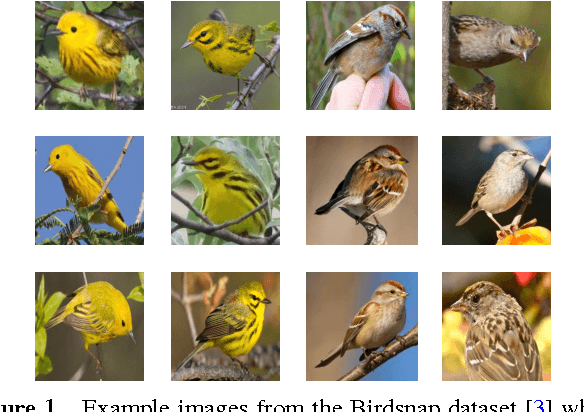

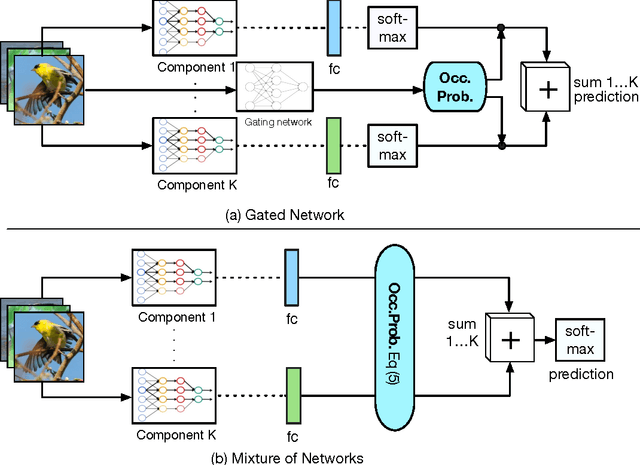
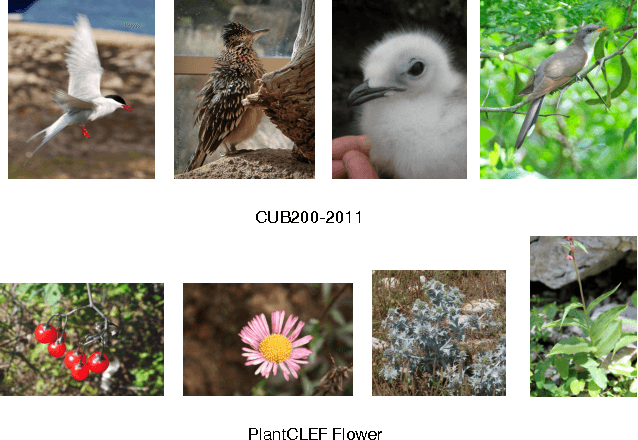
Abstract:We present a novel deep convolutional neural network (DCNN) system for fine-grained image classification, called a mixture of DCNNs (MixDCNN). The fine-grained image classification problem is characterised by large intra-class variations and small inter-class variations. To overcome these problems our proposed MixDCNN system partitions images into K subsets of similar images and learns an expert DCNN for each subset. The output from each of the K DCNNs is combined to form a single classification decision. In contrast to previous techniques, we provide a formulation to perform joint end-to-end training of the K DCNNs simultaneously. Extensive experiments, on three datasets using two network structures (AlexNet and GoogLeNet), show that the proposed MixDCNN system consistently outperforms other methods. It provides a relative improvement of 12.7% and achieves state-of-the-art results on two datasets.
Modelling Local Deep Convolutional Neural Network Features to Improve Fine-Grained Image Classification
Feb 27, 2015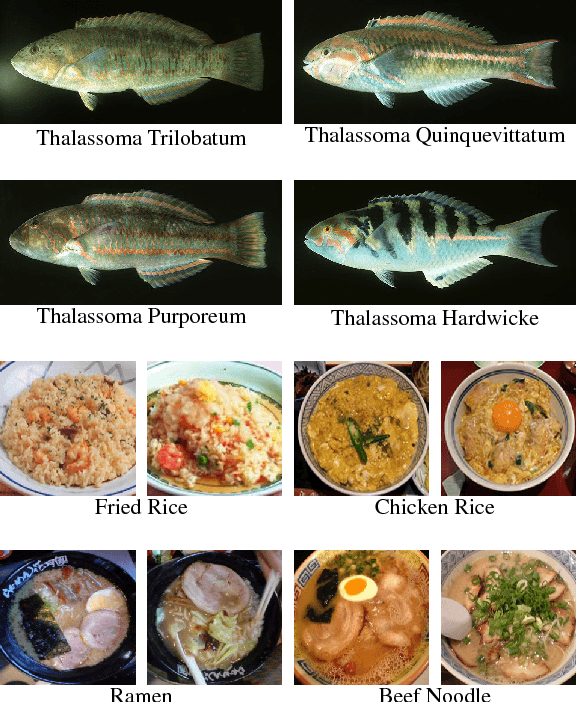
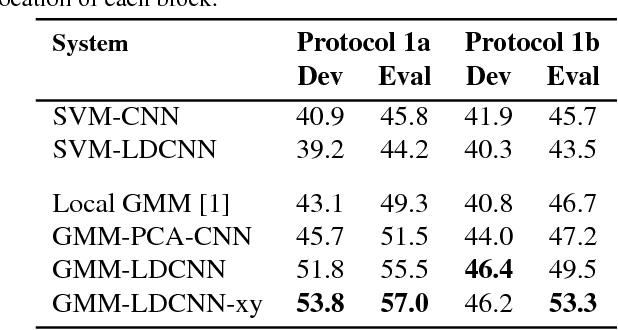
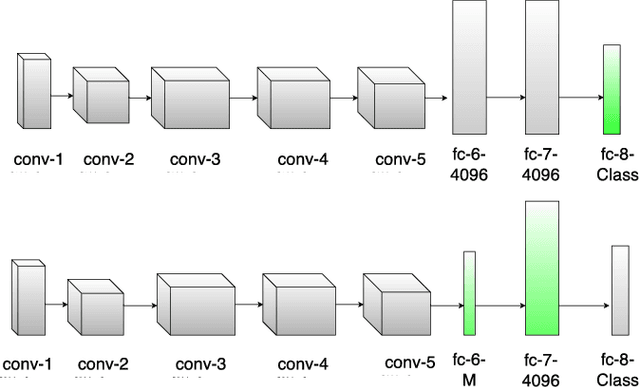
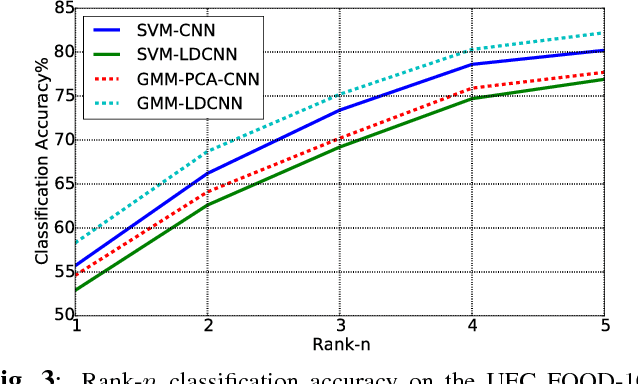
Abstract:We propose a local modelling approach using deep convolutional neural networks (CNNs) for fine-grained image classification. Recently, deep CNNs trained from large datasets have considerably improved the performance of object recognition. However, to date there has been limited work using these deep CNNs as local feature extractors. This partly stems from CNNs having internal representations which are high dimensional, thereby making such representations difficult to model using stochastic models. To overcome this issue, we propose to reduce the dimensionality of one of the internal fully connected layers, in conjunction with layer-restricted retraining to avoid retraining the entire network. The distribution of low-dimensional features obtained from the modified layer is then modelled using a Gaussian mixture model. Comparative experiments show that considerable performance improvements can be achieved on the challenging Fish and UEC FOOD-100 datasets.
 Add to Chrome
Add to Chrome Add to Firefox
Add to Firefox Add to Edge
Add to Edge